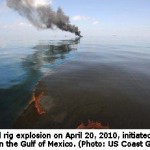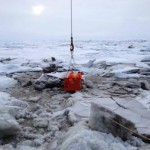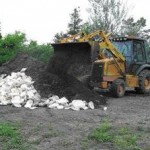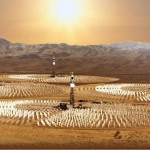 Washington, D.C. – When evaluating the historic contributions made by different countries to the greenhouse gasses found in Earth’s atmosphere, calculations generally go back no further than the year 1840. New research from Carnegie’s Julia Pongratz and Ken Caldeira shows that carbon dioxide contributions from the pre-industrial era still have an impact on our climate today. Their work is published in ‘Environmental Research Letters’.
Washington, D.C. – When evaluating the historic contributions made by different countries to the greenhouse gasses found in Earth’s atmosphere, calculations generally go back no further than the year 1840. New research from Carnegie’s Julia Pongratz and Ken Caldeira shows that carbon dioxide contributions from the pre-industrial era still have an impact on our climate today. Their work is published in ‘Environmental Research Letters’.
The burning of fossil fuels that came with industrialization released massive amounts of carbon dioxide emissions into the atmosphere, which has caused global warming. But clearing forests and other wild areas for agricultural purposes also contribute to atmospheric carbon dioxide, and that has been happening since before industrialization.
When unmanaged land is cleared for farming, part of the carbon is released immediately into the atmosphere as a result of burning. The rest of the carbon, including that from roots and wood products, releases carbon as the wood decays over years and centuries, meaning that carbon from pre-industrial activities is still being emitted into the atmosphere. Furthermore, a part of carbon dioxide emissions remain in the atmosphere for many centuries, because the ocean and vegetation on land absorb carbon dioxide only slowly over time. As a result, there is a warming effect long after the initial clearing of land.
“The relatively small amounts of carbon dioxide emitted many centuries ago continue to affect atmospheric carbon dioxide concentrations and our climate today, though only to a relatively small extent,” Pongratz, who is now at the Max Planck Institute for Meteorology, said. “But looking into the past illustrates that the relatively large amount of carbon dioxide that we are emitting today will continue to have relatively large impacts on the atmosphere and climate for many centuries into the future.”
Moreover, the effect of accounting for pre-industrial emissions can have important consequences for the amount of climate change attributed to certain regions. In some regions, such as North America, pre-industrial clearing is only a small part of the total carbon picture because such massive quantities have been released by burning fossil fuels. But in other regions, particularly China and India, the ratio of pre-industrial to industrial emissions is high.
The world’s population increased about five-fold between 800 and 1850 AD and half that growth occurred in China and India. This led to substantial deforestation in the pre-industrial era. On the other side of the coin, cumulative post-industrial fossil fuel carbon emissions for these nations are relatively low, only reaching substantial levels in recent years.
Using advanced models, Pongratz and Caldeira determined that accounting for pre-industrial emissions shifts attribution of global temperature from industrialized nations to developing nations by up to 2 to 3%. For example, the study found that considering emissions from pre-industrial land-use change increases the amount of total global warming that can be attributed to emissions from South Asia (a region that includes India) from 5.1% to 7% – an increase of 37% in the amount previously attributed to this region. Emissions from North America, Europe and the former Soviet Union have caused more than half of all global warming, even though fewer people live in those regions combined than live in India alone.
The researchers note that their work is not intended to increase the blame on people living in the developing world today for our current climate problems based on what their ancestors did centuries ago, particularly considering the much larger climate impact being made by modern industrialized nations on a daily basis.
“Accounting systems are not natural facts, but human inventions,” Caldeira said. “Once an accounting system is defined, it becomes a matter of scientific investigation to determine what numbers should go in the ledger, but broader questions of who is responsible for what and who owes what to whom are judgments that lie outside the scope of science.”
Details of the Study:
Source: Carnegie Institution for Science.














